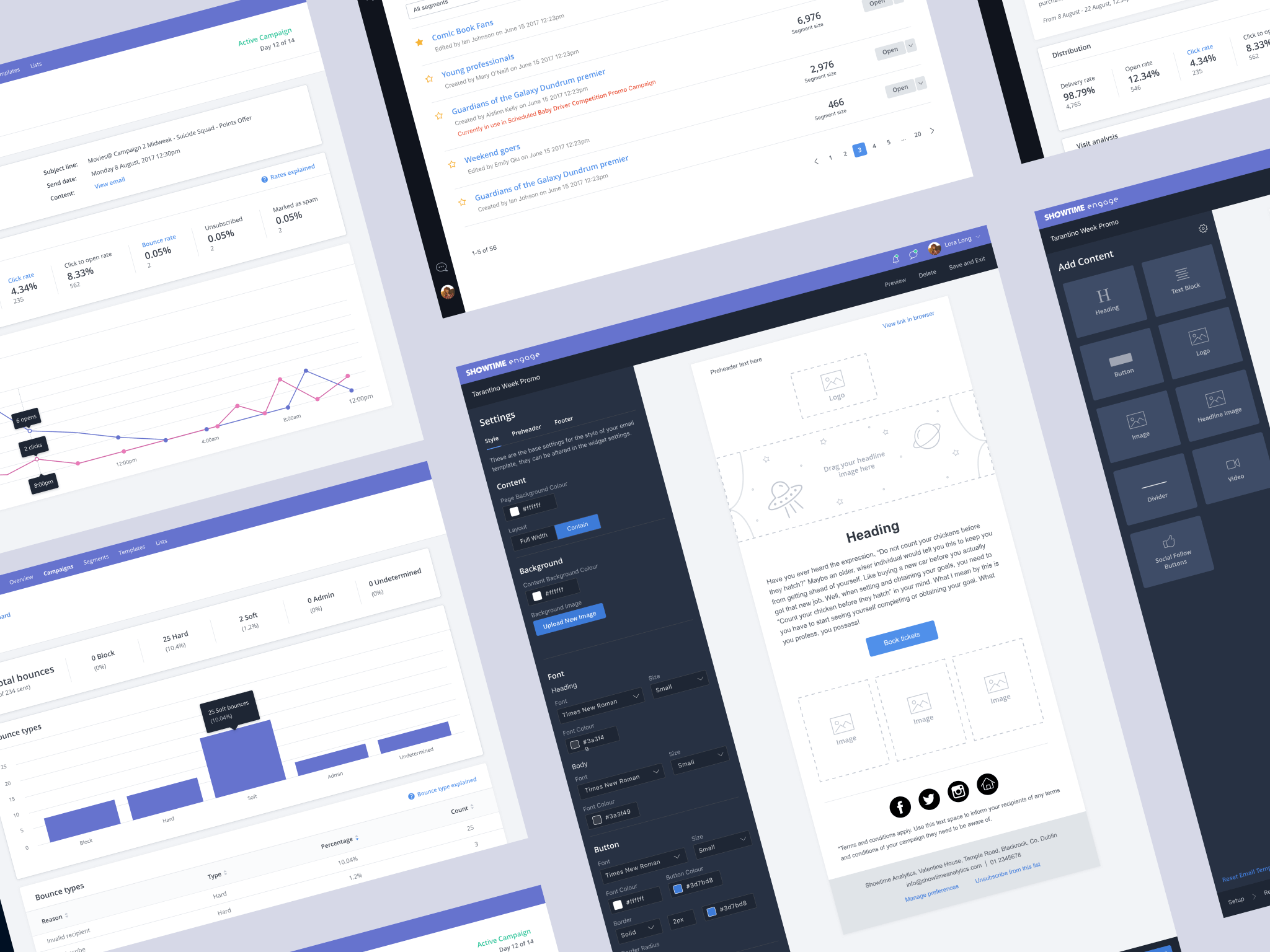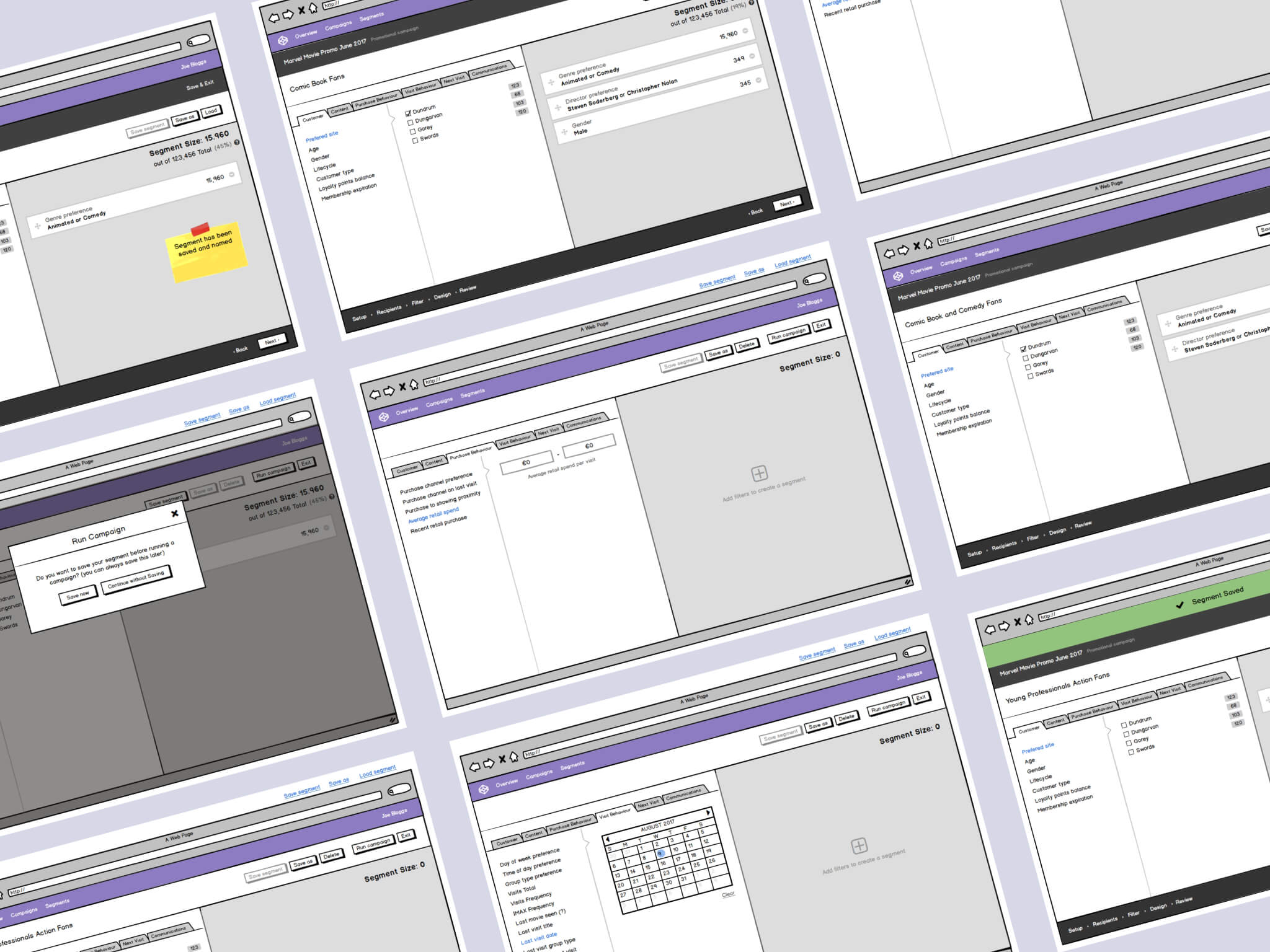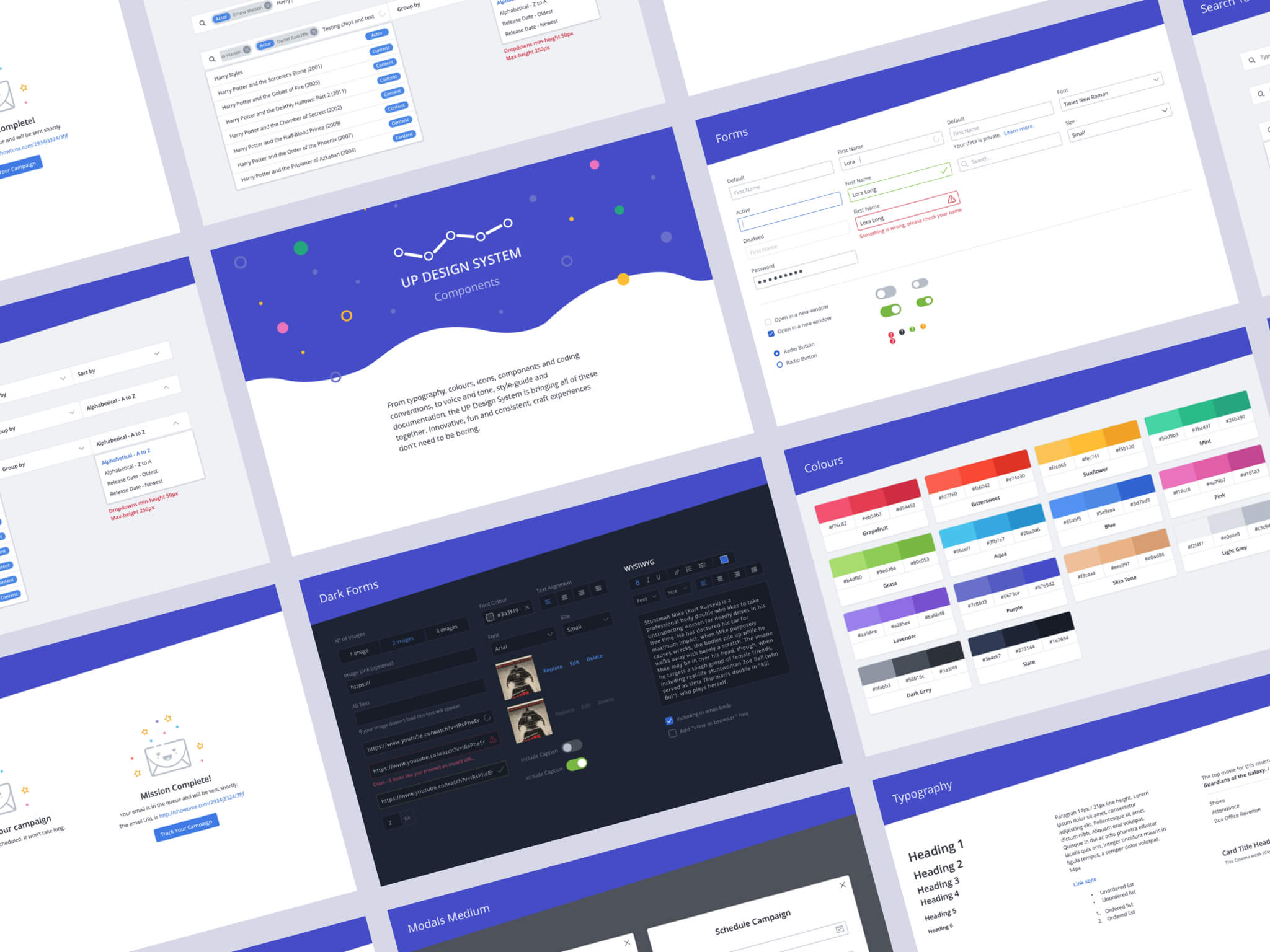A Segmentation tool to communicate with cinema audiences
June 14, 2019 • 4 min read

Showtime Analytics is an Irish startup that provides data analytics products and services to the global cinema industry. I was the second designer to join this startup.
Our first product release was called Insights. A product where we could provide cinemas with real-time, user-friendly visual analytics. But this product could only provide data and our customers wanted a way to communicate with their customers.
And that's when we decided to create Engage - a tool to provide personalized experiences for cinema audiences through data-driven marketing and communications.
Throughout the year I was responsible for creating this product from scratch and working on different features:
-
Segmentation Tool: Mass communication in marketing is a thing of the past. Customers want and expect to receive relevant, personalized information.
-
Customer Communications: A User-friendly content creation wizard that allows cinemas to set up a wide range of customer communications including one-off messages, scheduled communications, or newsletters.
-
Content Creation: A way for to cinemas design their own branded content using an easy-to-use drag-and-drop content creation tool.
-
Track Success: Engage harnesses marketing metrics such as open, click and bounce rates, and allows cinemas to track promotion success.
Segmentation Tool Case Study
The Problem
In cinema marketing mass communication constitutes a problem. It can be less efficient, less personalized, more expensive, and less effective than targeted methods.
In order to fix this problem of mass communication, we at Showtime Analytics developed a segmentation tool that allowed marketers to segment their audiences into smaller, more homogeneous groups based on specific characteristics, such as demographics, behavior, or interests.
By using a segmentation tool, a cinema marketer can identify different segments of movie goers such as families, teenagers, and retirees, and then create different marketing campaigns for each of these groups. The marketer can then use different channels like social media, email, or in-theater advertising to reach and engage each segment effectively.
Additionally, this tool can also help to identify the most profitable segments and focus the marketing efforts on them. This can help to improve the return on investment of the cinema marketing budget.
Wireframes and user testing
Showtime Analytics had very few designers, so we all worked together on the following steps:
- Defined the goal and objectives of the segmentation tool: Started by clearly defining what we wanted the tool to accomplish and what specific problems it should solve.
- Identified the user personas: Determined the different types of users who will be using the tool and as a team, we create user personas to represent them.
- Sketched out wireframes: As a team, we we sketched some ideas on a whiteboard. This will helped us to visualize the layout, navigation and features of the tool.
- Created detailed wireframes: Once we had the rough idea of the layout, we created detailed wireframes for each screen. The design team, used a wireframing tool called Balsamiq.
- Conducted user testing: Once we had our wireframes, we conducted some user testing. Basically guerrila user testings, with developers.
- Implemented feedback and iterate: Based on the feedback from user testing, as a team, we made revisions to the wireframes and conduct additional testing until you were satisfied with the design and functionality of the tool.

UI and prototype
After having all the required wireframes, I was responsible for creating the UI and prototype with Invision.
By conducting user testing and evaluating users' feedback at various stages, I was able to uncover and eliminate pain points early on

Coding and Design System

The final step was to start coding with ReactJS. I was responsible for creating layouts and UI components.
I was also responsible to include some of the components in our Design System. This product was built with Sketch, and we used Abstract to version control. The coding part lived in our Bitbucket repository and we used React Styleguidist as a component development environment.